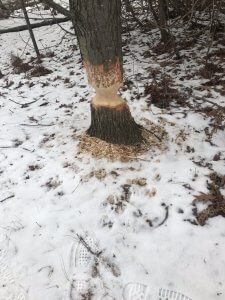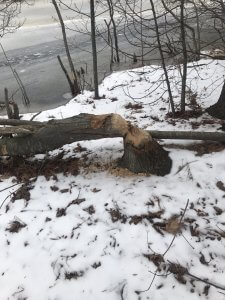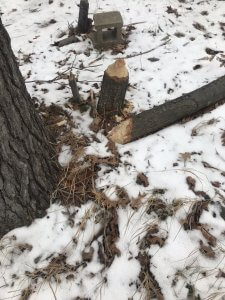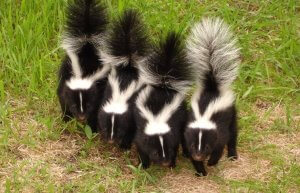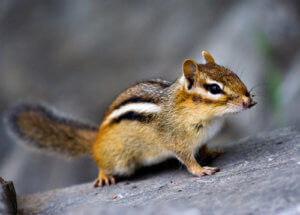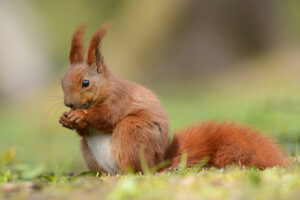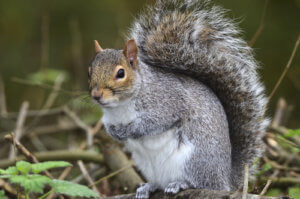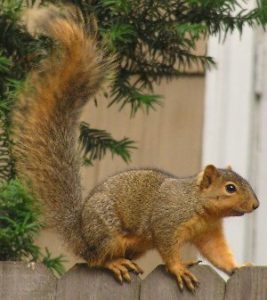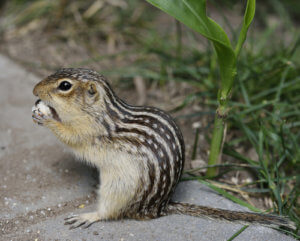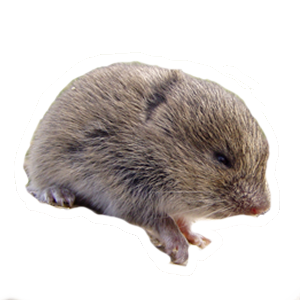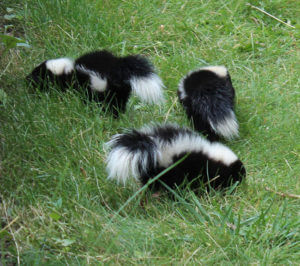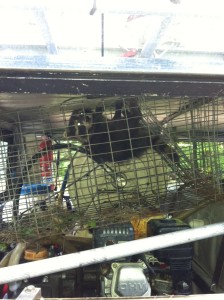Canada geese are a familiar late summer/fall sight beckoning the onset of autumn with their arrow-shaped flight pattern pointed south. Michigan is the home to over 330,000 Canada geese. Some stay year-round, many more are just passing by. Michigan’s hunting season for this bird runs on various dates from September through February.
The large, black-necked Canada goose with its signature white chinstrap is an extremely familiar and widespread bird of fields and parks throughout the entire country. Thousands of “honkers” (aptly nicknamed after the sound of their calls) migrate north and south each year, filling the sky with long V-formations. But as lawns have become increasingly abundant, more and more of these now grassland-adapted birds are remaining in urban and suburban areas year-round, where some people have begun to regard them as pests. Canada Geese are fit for aquatic life; their long neck, sizely body, large webbed feet, and broad, flat bill make for the ideal waterfowl. Their black head with white cheeks and chinstrap fades into a black neck, tan breast, and brown back.
Canada geese live in a variety of habitats near water, grassy fields, and grain fields.
Canada geese particularly seek out lawns for two reasons:
1) They can digest grass
2) When they are feeding with their young, well-manicured yards, give them a full, unobstructed view of any approaching predators.
Because of these reasons, they are especially abundant in parks, airports, golf courses, and other areas with expansive lawns throughout Michigan and the surrounding states.
Diet
In spring and summer months, geese concentrate their feeding on grasses. During the fall and winter, they rely more on heartier foods such as seeds, including agricultural grains, and berries— seeming to be especially fond of blueberries in particular. They also happen to be very skilled at removing kernels from dry corn cobs. Canada geese dabble for food in shallow water by tipping forward and extending their necks under the surface. During much of the year, they live in large flocks, and many of these birds are related to one another.
Mating
They mate for life as ducks and other waterfowl species, with meager “divorce rates,” and as a result, pairs remain together throughout the years. Geese mate “assortatively,” meaning larger birds choose larger mates and smaller ones choose smaller mates; in any given couple, the males are usually larger than the females.
It is quite typical that Canada geese will not breed until their fourth year; less than 10% of all geese produce as yearlings; this is because most pair bonds are unstable until birds are at least two to three years old. However, there is documentation of extra-pair copulations.
In the spring, pairs break out from flocks and begin defending territories. The spacing of these pairs is variable and depends on the availability of nest sites, and population density; where the population is vast, and even after a great deal of fights birds might end up nesting in view of one another, as some populations are somewhat colonial.
Threat displays of geese may involve ‘head pumping’; the bill will be open with the tongue raised, and there will be hissing, honking, and vibration of neck feathers. When/if an intruding goose doesn’t retreat, geese may grab each other by breast or throat and hit each other with their wings. This type of fighting may result in injuries as Canada geese have teeth and can be quite strong.
Canada Geese and their young
The female selects the nest site, builds the nest, and incubates the eggs. In many cases, she will brood goslings in cold, wet, or windy weather and while they’re sleeping for the first week after hatching. The males guard the nest while the females incubate.
Soon after hatching, goslings begin pecking at small objects but spend most of their time sleeping and feeding. They will remain with their parents at all times throughout the first year, though in some cases “gang broods” form, especially in more southern states. These will include at least two different broods, and sometimes five or more, that travel, and feed together, supervised by one or two adults. As summer dwindles and birds become more social, they may gather in large numbers at food sources. Where food is scarce or inconsistent, it is likely they will compete with displays of aggression and fights.
Migration
During the winter, geese can remain in northern areas with some open water and food resources even where temperatures are frigid. Geese that breed in the most northern reaches of their range tend to migrate long distances to overwinter in the more southern parts of the range, whereas geese breeding in the southern United States migrate lesser distances or not at all. Individual geese tend to return to the same migratory stopovers and wintering areas each year. Spring migration may be difficult to follow because of birds that over-winter and movements between overnight rest stops and feeding areas. However, the bulk of spring migratory patterns tends to move north behind the retreating snow line, where the temperature is averaging 35 degrees Fahrenheit and above.
Migrating flocks generally include aggregations of family groups and individuals, in both the spring and fall. Flights usually begin at dusk but may start at any time of day, as the birds fly both night and day. They travel in a V formation, with the more experienced individuals taking turns leading the flock.
Control
We see these birds all over Michigan, always in the least ideal places. Golf courses and those with homes near bodies of water most often complain of their droppings which are abundant and unsightly.
As we mentioned above, Canada geese do have a permitted hunting season, however, outside of the season, it is best to use herding dogs to eradicate the issue. Noisemakers and other persistent, consistent deterrents will ensure a flock does not return. This must be on a consistent, even yearly, basis if the property seems to be a hot spot for Canada Geese.
Hogarth’s Pest Control and Wildlife Company is NWCOA-certified for Geese removal and has a Border Collie on staff— an ideal tool for these types of jobs. The key to remediating a Canada goose problem comes down to consistency. As we mentioned above, these birds frequent the same locations for food and rest each year. It is important to set up a deterrent program that will continuously remind the geese that they are not welcome on the property. We work with you depending on the needs of your property, so give us a call today!

